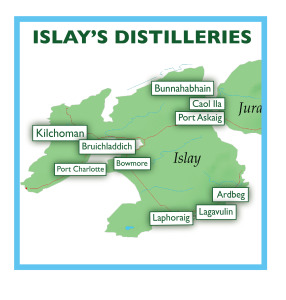Congratulations to Mike Peterson of Duluth for winning the drawing at APT’s booth last week! We were exhibiting at the Society for Mining, Metallurgy and Exploration show in Duluth, MN, and Mike stopped in the booth to register to win a bottle of peated whiskey.

What’s peated whiskey? The Scotch whiskey that comes from the island of Islay in Scotland is renowned for its distinct smoky flavor. That phenolic, peaty flavor comes from the practice of drying malted barley over peat fires. It is truly peated whiskey. Only whiskey made in Scotland qualifies as Scotch, but APT is in the early stages of exploring the use of our peat to create a malted barley that will ultimately mimic that of the original Islay brands.
Toward that end, we’ve started discussions with a Minnesota micro distillery to use Minnesota-grown barley, smoked with Minnesota-harvested peat, to create a unique Minnesota whiskey that captures the essence of our northern peatlands.
The idea of using locally-harvested peat to product spirits is still a new concept in Minnesota. The concept of using Minnesota peat for other uses, though, is probably as old as peat itself. Native communities used peat and peatland plants for myriad uses, from wound treatment to fuel. Certainly the immigrants who populated Minnesota from northern Europe were using dried peat to heat their homes and cook their meals. And in the late 1980’s, then-governor Rudy Perpich envisioned that Minnesota would become the “Saudi Arabia of peat” by using the state’s seven million acres of peatlands to produce energy. Today, the development of peatlands is tightly controlled and highly regulated, but there are still good reasons to use the peat resource in judicious and beneficial ways. Although the use of peat to produce smoky, phenolic barley for whiskey will never consume a large part of our current peat resource, it is another high-value use of a valuable natural resource.
Stay tuned as we continue to explore new uses for Minnesota peat. Peat may be “as old as the hills” but it still has relevance in our modern culture.
